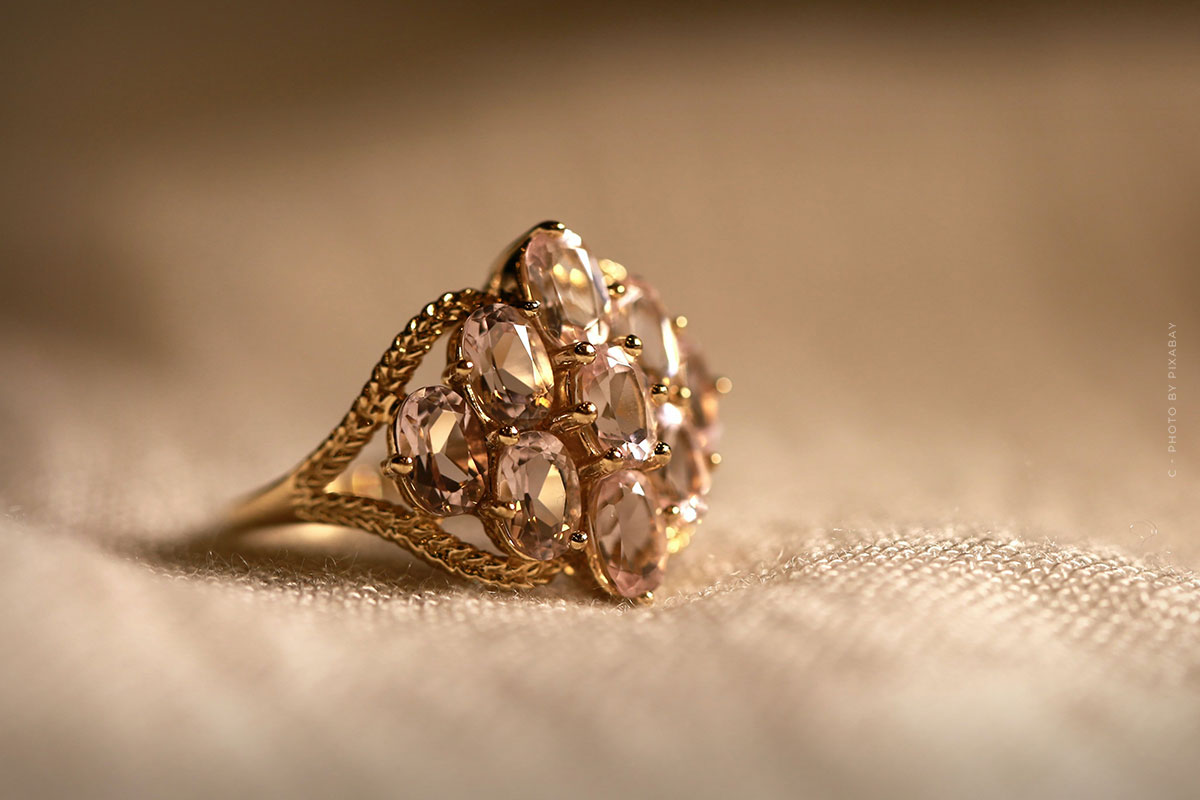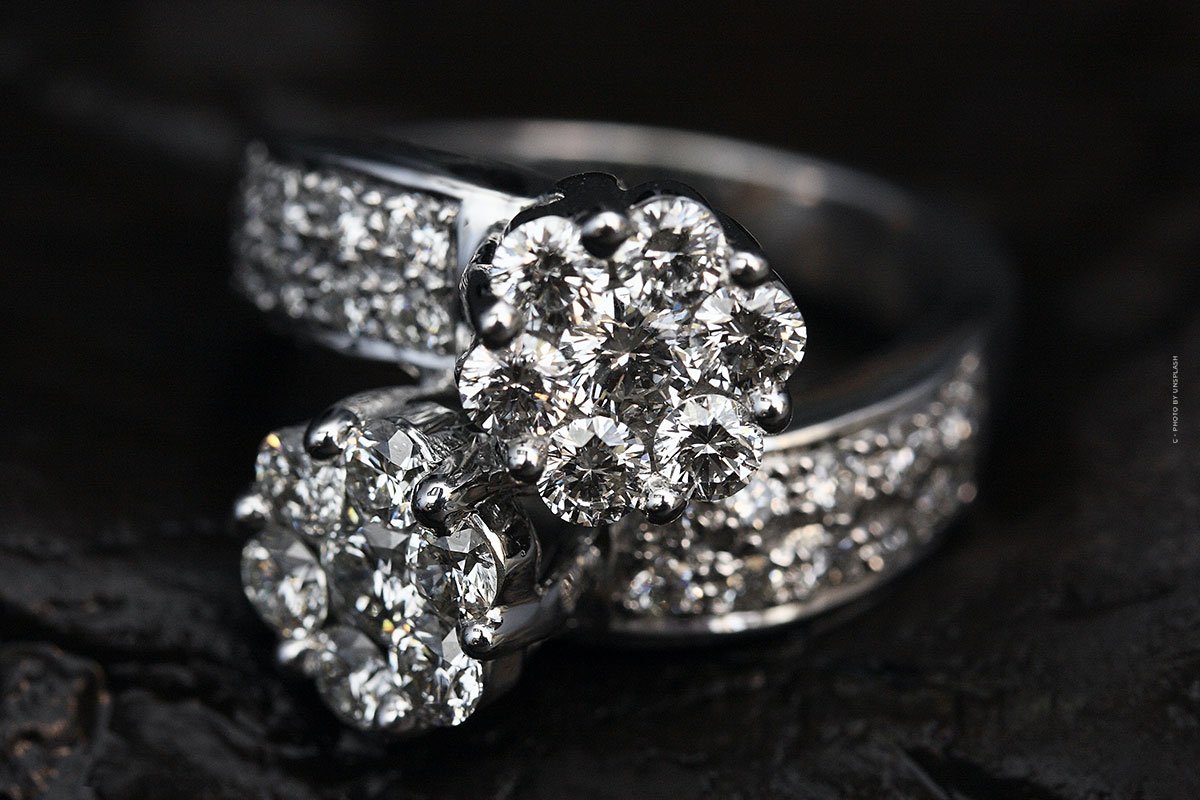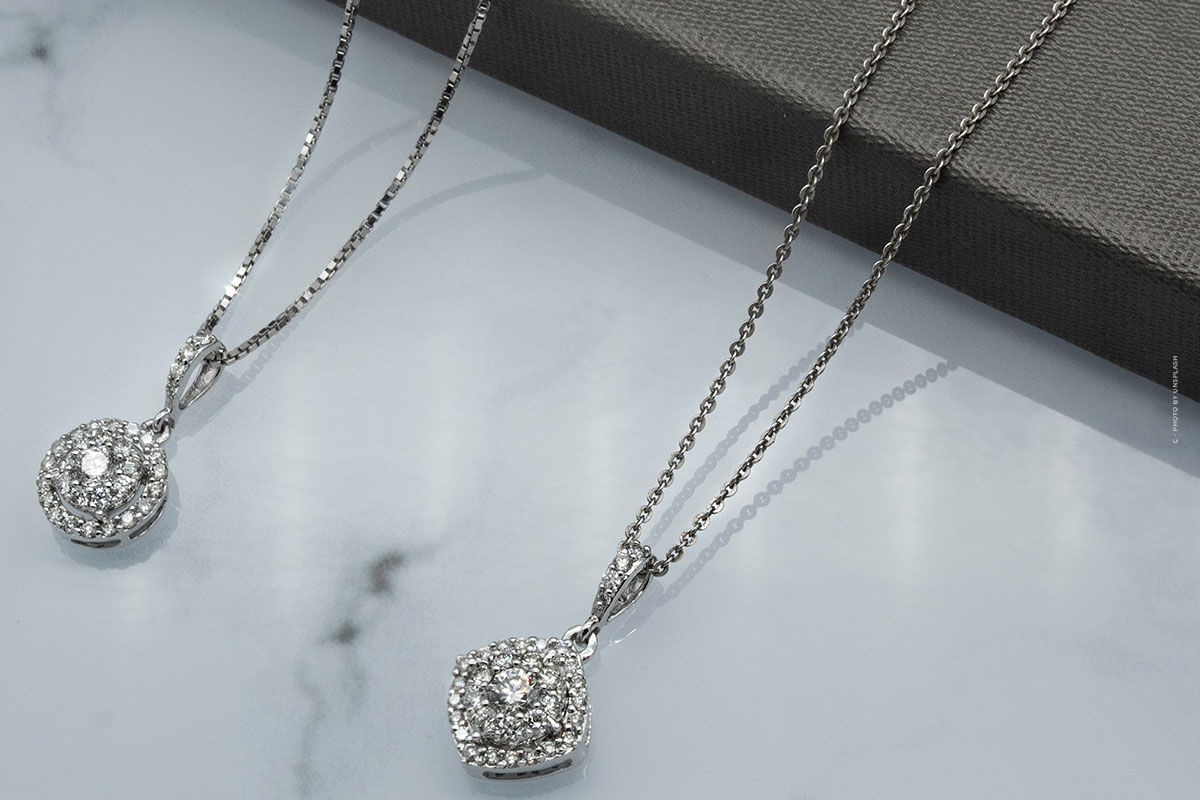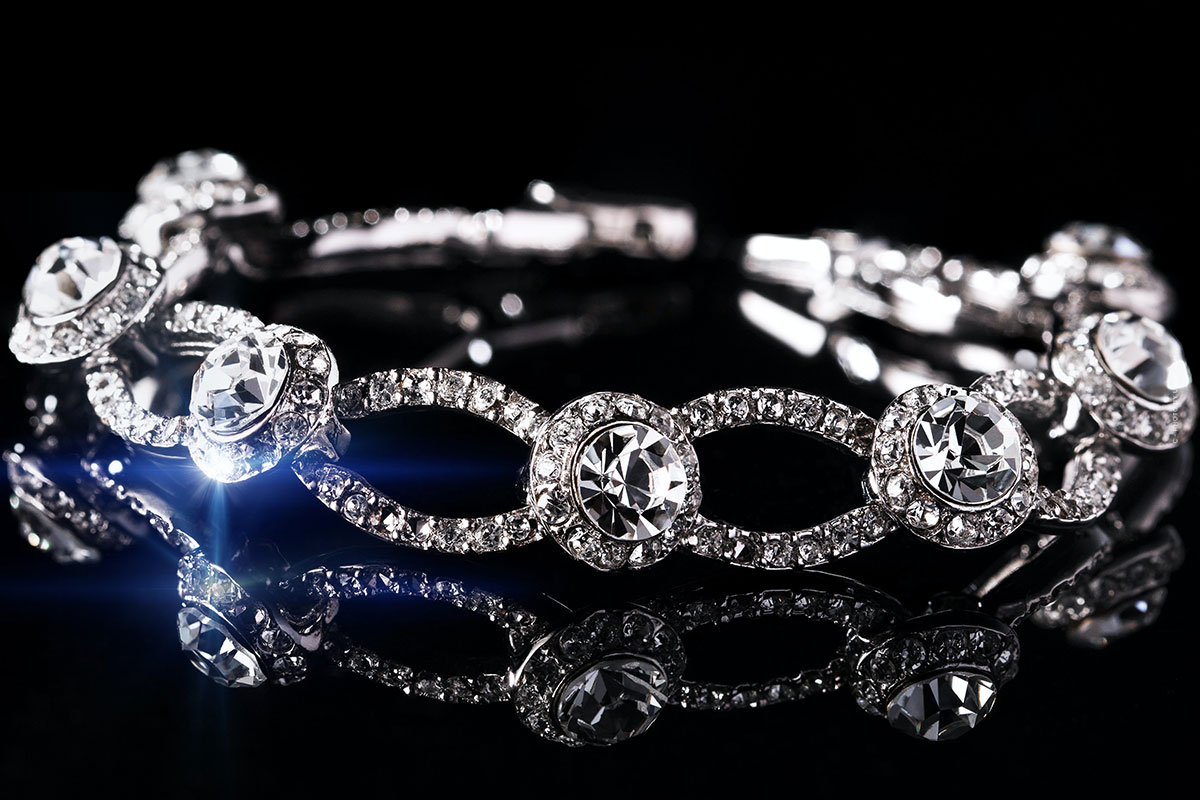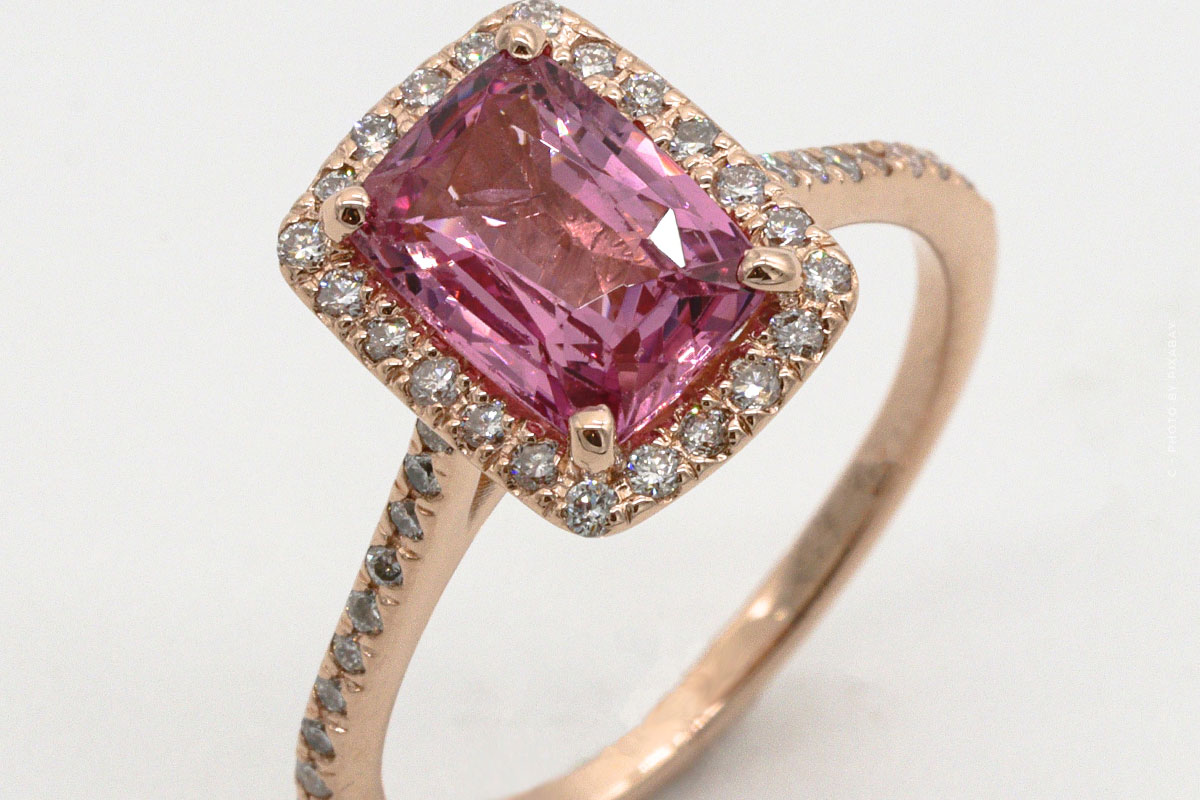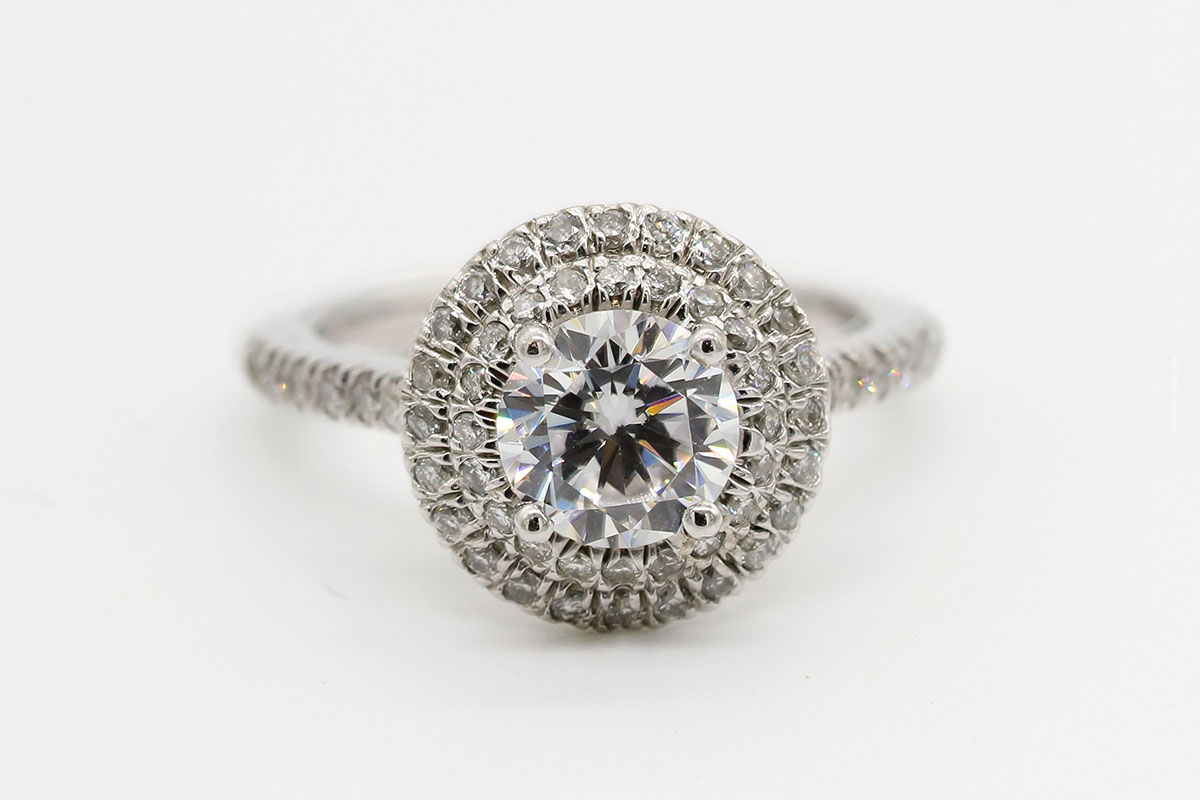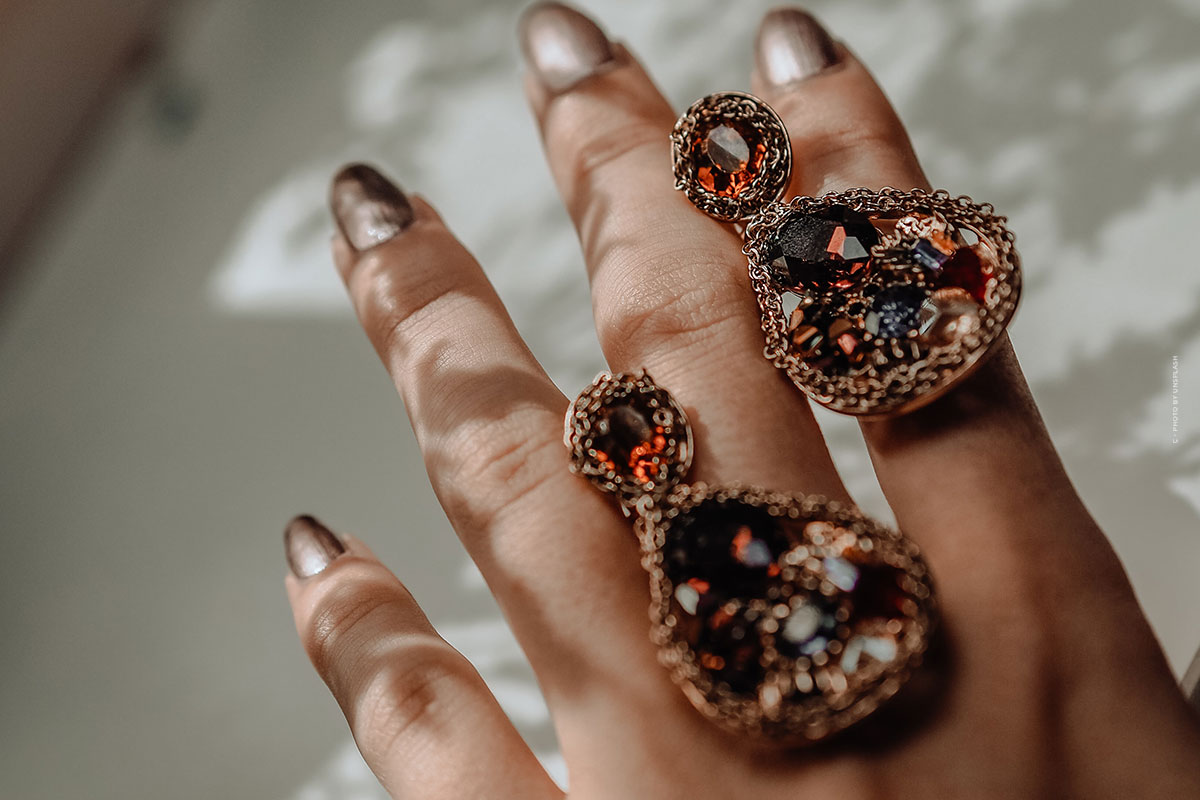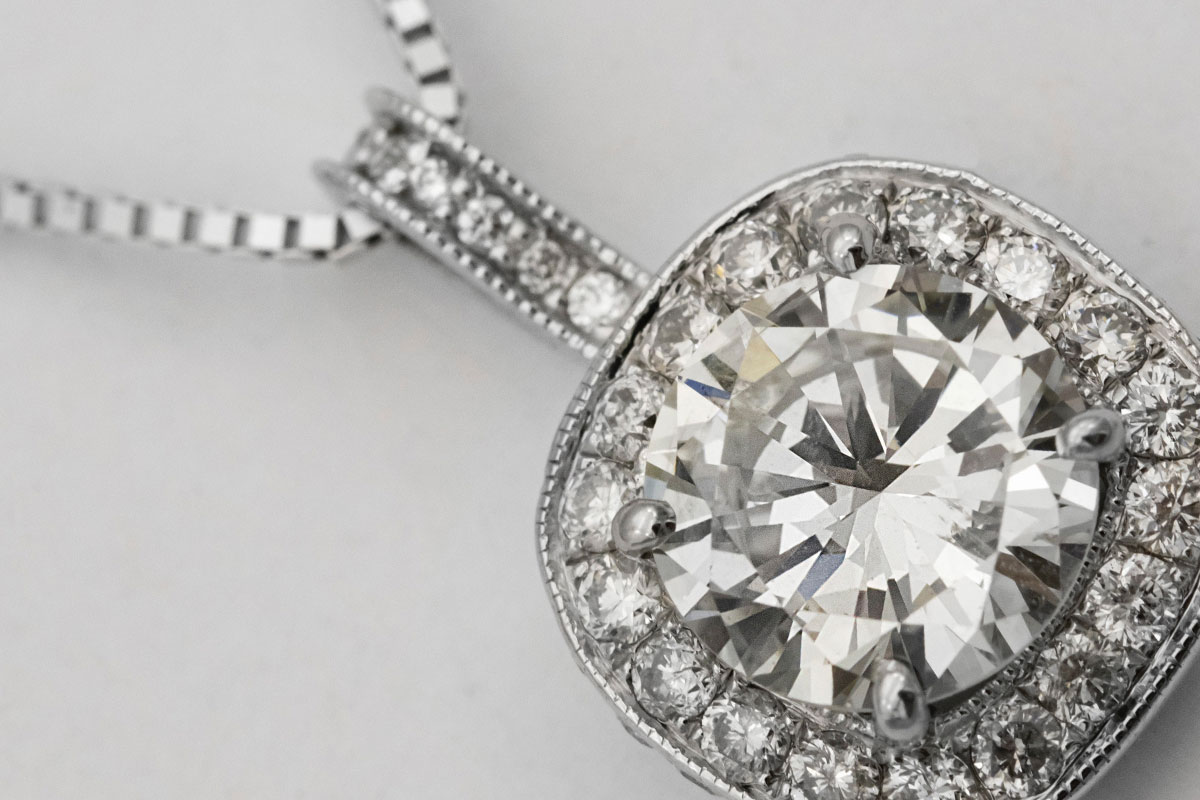Buy Topaz: Value, Price, Color & Cut – Investment Gemstone
Buying Topaz – Although clarity and size have a significant impact on the value of topaz, color has the biggest impact on pricing. The highest values go to the rare pink and red stones, followed by orange and yellow color variations. Yellow, orange and brown stones are somewhat common. Colorless topaz is widely available and is low value gemstone of any size. An overview of topazes. Back to the overview: Investment Gemstone.
Topaz Quality Features: The famous 4 C
Topaz can be confused with a plethora of other gemstones, probably most easily with aquamarine, citrine, beryl, chrysoberyl and tourmaline. Identification by physical and optical properties such as refractive index or specific gravity should not normally be a major problem for gemologists.
A grading system introduced by the GIA was established to grade topaz, just like diamonds or other gemstones, based on four aspects. These 4 grading systems are known as “the four Cs”. Topazes, especially the more valuable ones, are graded using the following criteria:
- Colour
- Cut
- Clarity
- Carat weight(Carat weight)
Colour of the topaz (Colour #1)
Topaz occurs in a wide range of natural colors; however, most natural topaz is colorless. The most prized colors are the reds and pinks, which get their color from traces of chromium. Chromium is also responsible for the color in purple and violet topaz. One variety known as “imperial topaz” is especially prized because people enjoy its reddish-orange to orange-red colors, both of which are often found in the same crystal. Most of the world’s imperial topaz is found in Brazil. Topaz with a natural blue color is very rare and valuable.
Blue was the most popular color for topaz on the market for a while. However, almost all blue gemstones started out as colorless or pale blue topaz. A safe and very common heat and radiation treatment gives them striking, darker colors. Before this development, natural pale blue topaz was rare and valuable, while colorless topaz had always been widely available and could be bought cheaply by the ton. The consequences of modern treatment processes: The market value for blue topaz dropped rapidly. Today they are among the cheapest gemstones on the market.
Beware of color falsification
Another method of distorting the color of topaz is a process called chemical vapor deposition (CVD), in which an ultra-thin layer of metal is deposited on the surface of the stone, usually titanium or gold. The colors produced are pink and red, green and petrol blue/green. One type of CVD-treated topaz exhibits iridescence in all the colors of the rainbow and is marketed as “Mystic Topaz.” Experience shows that the colored layer can be removed very easily with a fingernail scratch.
Yellow, brown and colorless topaz also have lower values. These colors are often heated, irradiated, coated and otherwise treated to change their color.
Facts about the color at a glance
Naturally blue topaz is quite rare and shows a fine aquamarine color only in the best cases. It never exhibits the striking and unnatural “Swiss blue” hue caused by irradiation. The only irradiation-induced color that could be mistaken for a natural color is a light blue marketed as “sky blue”.Occasionally, one encounters intensely green topaz in the markets. These stones owe their color to a diffusion treatment. The layer of color produced by this treatment is usually so thin that it can be removed by simple repolishing. The result is a colourless topaz…
Today, most topaz offered in department stores and mall jewelry stores at low to moderate prices has been treated in a laboratory. Colorless topaz can be heated, irradiated, and coated with thin layers of metal oxides to change its color.
Natural blue topaz is extremely rare and is usually light blue. Almost all blue topaz sold in stores today is colorless topaz that has been irradiated and then heated to produce a blue color. “Swiss Blue” and “London Blue” are trade names for two of the most common varieties of treated blue topaz found on the market today.
Natural pink to purple topaz is also extremely rare, but these colors can also be produced in the laboratory. The starting point is a stone cut from colourless topaz. It is first heated and then coated with a layer of metal oxide to create the pink color. When coated stones are worn in jewelry, the coating can thin or wear through over time in areas of the stone where abrasion occurs.
Some topazes are coated with a metallic oxide that gives the stone a multicolored iridescent glow. These stones, known as “mystic topazes,” appear to change color when the viewer moves the stone under light or changes the angle of observation. These coatings are also thin and can with normal wear.
Term topaz (fluorosilicate)
In 1734, the German mineralogist and metallurgist Johann Friedrich Henckel diagnosed that topaz differs from quartz due to its different cleavage. Thus, Henckel was the first to apply the term topaz to the fluorosilicate, which today bears the name and did not include other minerals.scoured.
Cut of the topaz (Cut #2)
Due to its high cleavage, topaz is a particularly difficult gemstone to work with. Even rapid temperature changes or careless setting work can lead to cracks and fissures in the stone.
Another method of distorting the color of topaz is a process called chemical vapor deposition (CVD), in which an ultra-thin layer of metal is deposited on the surface of the stone, usually titanium or gold. The colors produced are pink and red, green and petrol blue/green. One type of CVD-treated topaz exhibits iridescence in all the colors of the rainbow and is marketed as “Mystic Topaz.” Experience shows that the colored layer can be removed very easily with a fingernail scratch.
Topaz shows perfect basal cleavage, which must be taken into account when cutting and setting. It is not particularly sensitive to acids, except concentrated sulphuric acid. Galvanic baths are not problematic.
However, topaz is very sensitive to heat and should be removed from the setting before any repair work is carried out.
Many brown and orange-brown topaz fade when exposed to light. We once had a beautiful, intensely brandy-colored specimen that faded to complete colorlessness within a year!
Purity of the Topaz (Clarity #3)
Gemstone clarity refers to the presence or absence of inclusions in the stone. Inclusions are any materials such as minerals, gases, liquids, or even other crystals that were trapped inside during its formation. Of the top four gemstones, the others being diamond, sapphire and ruby, emeralds are unique in the number of high quality specimens that contain inclusions, a flawless emerald is almost impossible to find. In fact, the flaws are what often give emeralds their charm, and the absence of any inclusions is often a sign of a fraudulent stone.
Facts about purity at a glance:
- Presence or absence of inclusions
- Emeralds usually contain inclusions
- Flawless emerald almost impossible to find
- Absence of any inclusions is often a sign of a forgery
Important: clarity and transparency
With emeralds, as with other colored stones, clarity and transparency are closely related. It is generally accepted that emeralds have inclusions visible to the naked eye, but only if they affect the transparency, the price is lowered.
Valuable emeralds with inclusions are so standard that there is even a name for them, Jardin-Smaragde (Jardin is French for garden and is so named because of its mossy or grassy appearance). When choosing an emerald, beware of inclusions that come to the surface of the gemstone, as they may indicate future cracks or fractures.
Carat / Weight of the topaz (Carat #4)
The final indicator of price is, of course, the size of the emerald. Large carat sizes are particularly rare, so a three carat emerald gemstone is not only three times as expensive as a one carat stone, but probably six times as expensive. The size of an emerald is measured in carats (abbreviated as ct). One carat is equal to 0.2 grams (about 0.007 ounces).
Topaz crystals can weigh hundreds of pounds and are often quite gemmy at this size. Gemstones of up to 20,000 carats have been cut from different colored material. Museums seem to be happy to receive monster sized topaz gemstones for display. Pink gemstones over 5 carats (Pakistan) are rare, however, and a Brazilian deep orange gemstone over 20 carats is considered large.
Heat treatments are also used to turn some yellow, orange and brown topaz into pink or red. This process is common, stable and undetectable.
“Mystic Topaz”
A chemical vapor deposition (CVD) process is used to create a mystic topaz, a stone with a multi-colored coating on its surface. This is a common process. The surface coating can be easily scratched. This treatment can be detected by dipping.
Occurrence and mining areas of the gemstone
There are localities all over the world: Widespread throughout the world. Topaz is found on every continent. Mindat.org lists 1186 localities. The most important sources are Brazil, Sri Lanka, Russia and Nigeria.
Topaz occurs in many places around the world where rocks such as pegmatite and rhyolite are formed. Here, topaz is usually a minor mineral in terms of quantity and a secondary mineral in terms of its time of formation.
Brazil has been the world’s most important source of topaz for decades. Almost all of the world’s high-quality imperial topaz is produced in the state of Minas Gerais in southeastern Brazil. The mines of Ouro Preto and Capao are the most important sources of yellow, orange, pink, red and purple topaz crystals for the gem and mineral specimen market. Brazil is also the leading producer of colorless topaz, much of which is heat treated and irradiated to produce the colors Swiss blue and London blue.
Pakistan is a smaller but notable source of pink, red and purple topaz. Sri Lanka is a very important source of colorless topaz. Other sources of topaz are: Australia, India, Madagascar, Mexico, Myanmar, Namibia, Nigeria, Russia and Zimbabwe. In the United States, some topaz is produced in Utah, where it was designated a state gemstone in 1969.
- Australia
- Mexico
- Pakistan
- United States
- Other sources
Australia
Queensland and Tasmania yield blue, colorless and brownish gem crystals. Tingha, New South Wales produces green gem-like material.
Mexico
San Luis Potosí produces fine brownish to sherry-colored crystals, as well as colorless and some yellowish, in many excellent, cuttable forms. Some of this material can be darkened by irradiation, but the color fades in sunlight.
Pakistan
Mardan produces fine pink crystals, terminated and cuttable, in limestone matrix, at Ghundao Hill, near Katlang.
United States
New Hampshire crystals are found, in Texas stones that are colorless and blue, some faceted to large. Likewise, there are areas in Pike’s Peak, Colorado. Here you will find fine blue crystals in granite rock; also colorless, reddish, yellow, some faceted.
Other sources: Germany to Sri Lanka
Other notable sources of gem quality include the following:
- Schneckenstein, Germany: faint yellow, gemmy.
- Madagascar: various colors in crystals and pebbles, often grindable.
- Myanmar: colorless, blue, brown, pink and yellow gemstone masses from gemstone grains.
- Klein Spitzkopje, Namibia: colorless and blue crystals from pegmatites, gemmy.
- Jos, Nigeria: fine blue crystals, also white, many grindable.
- Sri Lanka: colourless, yellow and blue gemstone masses from gemstone grains.
- Afghanistan; India; Japan; Vietnam; Norway; United Kingdom (Cornwall, England, Scotland); Zimbabwe.
Largest known finds
The largest known pink topaz is an oval of over 79 carats from Russia. The largest Brazilian topaz crystal of orange color ever found is said to measure 5 x 27 cm and weigh nearly 2 kg. A very fine lot (9 cutable crystals) found in the 1960s weighed over 900 grams and produced several outstanding gems, one weighing over 100 carats and several over 50 carats. Giant topazes exist in blue, colorless, and pale yellow colors. Red topaz from the tops of some Brazilian crystals is extremely rare, the largest about 70 carats.
Origin of the name
The Greek term “Topazos” is possibly derived from the name of an island in the Red Sea called Topazios. Most likely this was the island of Zebirget (Sebirget, Zabargad et al.). The island name Topazios is in turn derived from the word Topazin or Topazein, which means “to seek” or “to suppose”, since the island was usually obscured by fog and therefore difficult to find. The Greek historian Cornelius Alexander Polyhistor (Polyhistor was born a Roman citizen in 82 BC, hence the Latinized name) wrote that stones the color of fresh (olive) oil were found on the island. In volume 37 of his monumental work Naturalis Historia, Pliny writes about Topazos from the island in the Red Sea. In fact, Zebirget is the main source of peridot for a very long time.
This claim is all the more plausible because until the tenth century A.D. the word “topaz” was commonly used to describe green gemstones.
In the Septuagint, a Greek translation of the Hebrew Bible, Pitdah, the Hebrew name of the second stone in the high priest’s breastplate, is given as topaz. The American mineralogist and gem collector George Frederick Kunz (in whose honor the mineral was christened kunzite) assumed that the root of pitdah was in the Sanskrit word pita, meaning yellow, and concluded that it may actually have meant the mineral now known as topaz.
The counterargument, of course, is that topaz in ancient times denoted green gemstones.
Trade names (excerpt)
There are so many Handesl names, here is just a small sample:
- Sky blue, aqua blue (reinforced)
- Swiss blue, medium blue (reinforced)
- London Blue, dark blue (reinforced)
- Mystic surface treated topaz with multiple colors
- Hyacinth or hyacinth, dark orange to orange-red
- Emperor topaz, highly saturated medium, reddish-orange
- Sherry, brownish yellow to orange or yellowish brown

